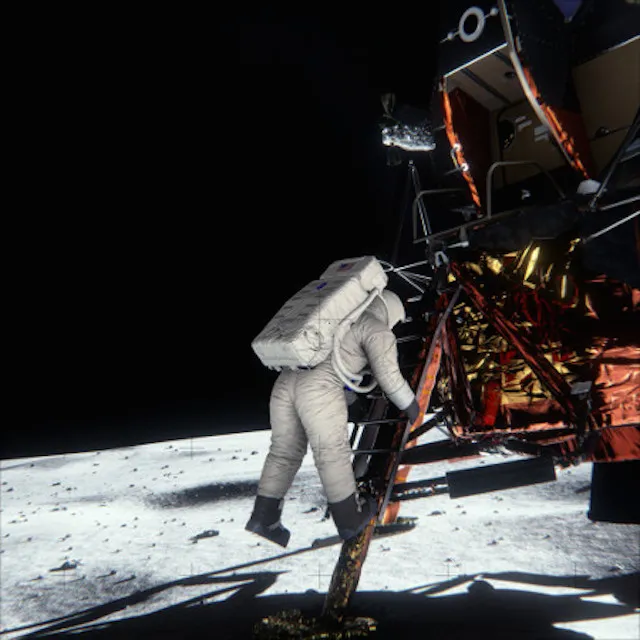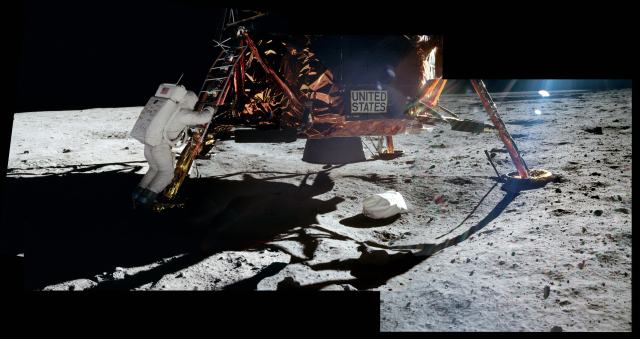NVIDIA has decided to prove how great their new GPUs are by using them to simulate lighting conditions for the Apollo 11 Moon landing and debunk conspiracy theories about photographs and video from the Moon. Or, depending on how strongly you believe the Moon landing conspiracy theories, NVIDIA just proved that their new GPUs are terrible and light things all wrong. Your call, I guess.
Using their new “Maxwell” GPUs, NVIDIA’s demo team rebuilt the Moon landing in Unreal Engine 4 to simulate how the light would reflect off of the Moon’s surface and other objects to light the photo. The cards have new GPU-intensive, real-time light reflection technology called Voxel-Based Global Illumination (VXGI) that dynamically calculates how light bounces from thousands of tiny 3D pixels (voxels), so what better place to put it to the test than our planet’s largest reflector?
The specific claim the team was attempting to debunk is that Aldrin should be much more shadowed than he appears in photographs, because he’s in the Lunar Module’s shadow. This leads people to believe that Aldrin was lit from an outside light source in a studio back lot somewhere, because when putting together possibly the largest-scale conspiracy ever, it’s always best to throw in easily noticeable photographic impossibilities.
Here, have a look at the real image in question (via NASA):
And some partially restored video:
You can already tell from the original image that the light on Aldrin is bouncing up from the lunar surface by the way it hits the metal folds on the bottom of the Lunar Module and leaves shadows only on top, because in case you’ve never gone outside at night, the Moon is basically a giant reflector. But why not go the extra mile and recreate the whole thing in a computer simulation? Unsurprisingly, NVIDIA’s image (all the way at the top) came out with basically the same lighting effect as the original.
NVIDIA’s blog post about the recreation reads:
It’s a feat that gives Mark Daly, who leads our demo team, great satisfaction. “Men lost their lives as part of the Apollo project, so it bugs me when people say it was all a hoax,” says Daly, an NVIDIA veteran. “People risked their lives to get to the Moon.”
They also tested the “but why aren’t there any stars in the picture” thing and came up with the conclusion that, yup, photographic exposure is an actual thing that exists. The flying rock that lights our planet at night does produce a light so bright that you can’t expose an image for both it and faint twinkly stars while you’re standing on its surface.
OK, so recreating the scene in CGI isn’t so much scientific proof as it is a flashy way to promote NVIDIA’s fancy new VXGI technology, but the real scientific proof that we went to the Moon came about 45 years ago when there were two astronauts standing on it, so I think we can let that slide. Here’s a video from NVIDIA detailing the process:
At least it’s more scientific than Buzz Aldrin’s approach to proving we’ve been to the Moon, which involves a swift punch to the face.
Let’s commemorate by yelling at the Moon.
(via io9, image via NVIDIA and 30 Rock)
- New Horizons took some pictures of one of Pluto’s moons
- The Internet celebrate the 45th anniversary of the Moon landing
- The Earth would be completely bananas without the Moon
Are you following The Mary Sue on Twitter, Facebook, Tumblr, Pinterest, & Google +?










